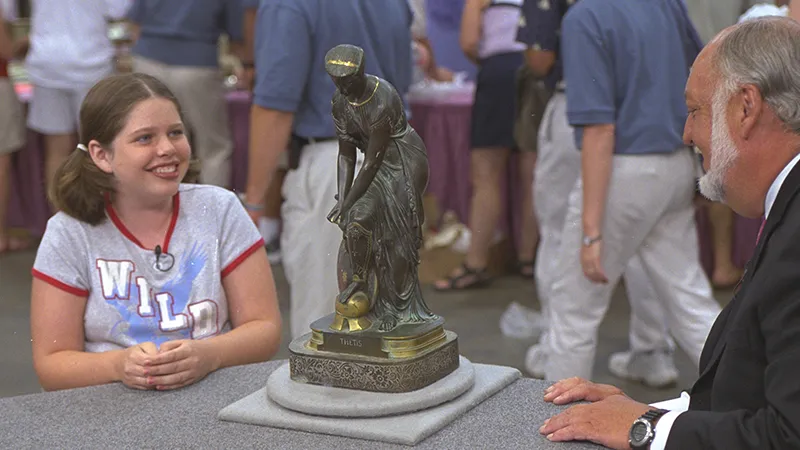GUEST: It was given to my great-great-grandfather, Major John Dougherty, who was an Indian agent for the Indians of the Upper Missouri, interpreter, hunter. He came from Kentucky in 1810, 1817, somewhere along in there. He did this up until 1840. And then he came back to Clay County and lived there until he died in 1860. This was given to him by one of three Indians-- White Plume of the Kansa tribe, Big Elk of the Otoe, and Iatan of the... oh, and I forgot.
APPRAISER: That's quite all right, you're doing good. And you've brought it in to hopefully find out which of those groups gave it to him, which tribe?
GUEST: Yes, uh-huh.
APPRAISER: Well, this is an extraordinarily rare thing. And because it's so rare, there's not a lot of information about them. Do you know what this is?
GUEST: It was a tobacco pouch. It was sewed together up at the top and fit over the pommel of the saddle.
APPRAISER: It could have done that. They were worn as a bandolier bag also.
GUEST: Okay, okay.
APPRAISER: And they're probably better known as shot pouches. They carried shot... lead shot for the rifle. These are... widely survive in the East, in the Great Lakes in the East. And they're somewhat common. All Native American art is rare, but on a comparative basis, they're somewhat common. Bandolier bags from these groups are very rare. I've seen a handful in my time. So I'm not going to really be able to specifically say-- I wish I could, but I can't-- say this is Otoe, this is Kansa. It has some influences of both. It also has some influences of the eastern Sioux. And I know your great-great-grandfather traveled fairly widely-- up the Missouri, as far as Oregon. I think this dates from about 1840. Maybe 1830, 1840. But even at that early period, this is all trade material. There's no indigenous material here. The edge here, you can see a little bit of fraying, it would have had what appears to be a blue-- turned somewhat purple-- silk edging all along the side. These bifurcated tabs at the bottom are very unusual. We don't see that very often on these bandolier bags. In trying to obtain value, one of the things we do is look for sort of what I call the holy trinity: rarity-- this has it-- provenance-- this has tremendous provenance. There's a fair amount written about your great-great-grandfather.
GUEST: Yeah.
APPRAISER: And lastly, beauty. This, to me, is really beautiful.
GUEST: Oh, well, that's neat.
APPRAISER: Sort of my taste. I don't know if it is for you.
GUEST: Oh, yeah.
APPRAISER: But for me, it's beautiful. We could easily sell this in the neighborhood of $30,000 to $35,000.
GUEST: Oh, my God.



